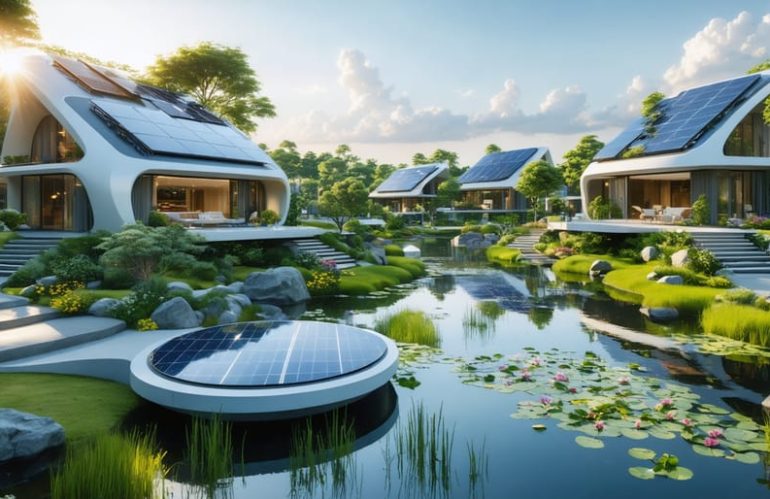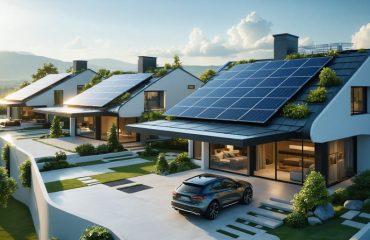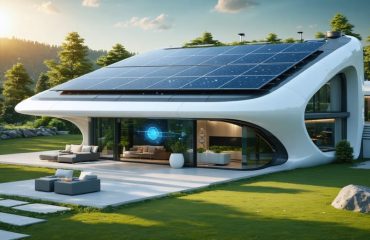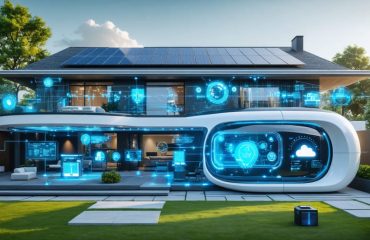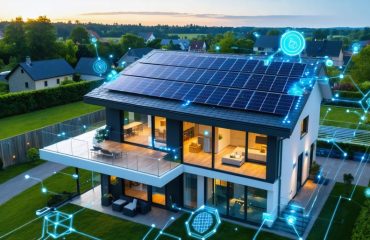The next decade will revolutionize how we live, work, and interact with technology. From quantum computing to exciting solar innovations, breakthrough technologies are emerging at an unprecedented pace, promising to transform our daily lives while addressing critical global challenges. As artificial intelligence becomes more sophisticated and renewable energy solutions advance, homeowners stand at the cusp of a technological revolution that will make their homes smarter, more efficient, and increasingly sustainable. These innovations aren’t just reshaping industries – they’re creating practical solutions for everyday challenges, from reducing energy bills to enhancing home security. Understanding these emerging technologies is crucial for making informed decisions about home improvements and energy investments in the coming years, especially as these solutions become more accessible and affordable for the average homeowner.
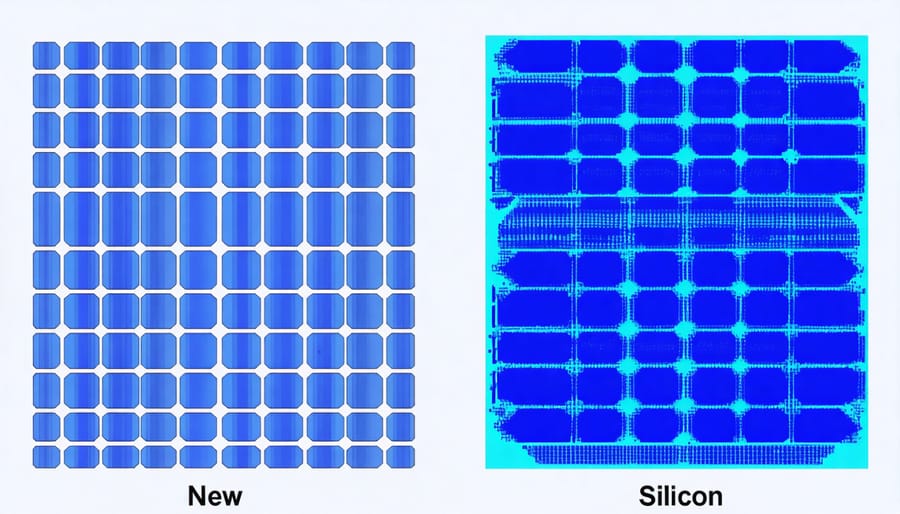
Perovskite Solar Cells: The Next Generation
Higher Efficiency at Lower Costs
Modern solar technologies are delivering impressive gains in both efficiency and affordability, making solar power more accessible than ever before. Today’s panels can convert up to 23% of sunlight into electricity, compared to just 15% a decade ago, while production costs have dropped by more than 70% since 2010. These improvements mean homeowners can generate more power with fewer panels, reducing initial installation costs and maximizing rooftop space.
Advanced manufacturing techniques and automated production lines have helped drive down manufacturing costs, while improved materials and design innovations have boosted panel performance. This combination results in a faster return on investment for homeowners. For example, a typical residential solar system now pays for itself in 5-7 years, compared to 10-12 years in the past.
The efficiency gains aren’t just in the panels themselves. Modern inverters, energy management systems, and installation methods have all become more streamlined and cost-effective, further reducing the total cost of going solar.
When Will They Reach Your Roof?
While some of these game-changing solar technologies are already available in limited markets, others are still in development. Solar paint and perovskite cells are expected to reach commercial availability within 3-5 years, while transparent solar windows could become mainstream within 5-7 years. Building-integrated photovoltaics (BIPV) are gradually entering the market, with wider adoption anticipated by 2025. Solar roof tiles are currently available but becoming more affordable each year. Smart solar systems with AI integration are already here, with enhanced capabilities rolling out annually. Floating solar panels are primarily for utility-scale projects but may reach residential applications within the decade. The timeline for each technology varies by region and market demand, but most homeowners can expect to see these innovations become readily available within the next 5-10 years, with prices decreasing as adoption increases.
Transparent Solar Windows
Imagine turning your home’s windows into silent power generators. Transparent solar windows represent one of the most exciting breakthroughs in renewable energy technology, offering a seamless way to harvest solar power without compromising your view or your home’s aesthetic appeal.
These innovative windows contain ultra-thin, invisible solar cells that capture sunlight while maintaining up to 90% transparency. The technology works by absorbing non-visible wavelengths of light (ultraviolet and infrared) while letting visible light pass through, creating electricity without the typical blue or black appearance of traditional solar panels.
For homeowners, this means the potential to transform every window in your house into an energy-generating surface. A typical home equipped with transparent solar windows could generate up to 30% of its electricity needs, significantly reducing energy bills while maintaining the natural light and views you love.
The applications extend beyond just windows – these solar-harvesting surfaces can be integrated into skylights, glass doors, and even greenhouse panels. As the technology continues to improve, manufacturers are developing options that offer various tints and energy-efficiency levels to suit different climates and preferences.
While currently in the early stages of commercialization, transparent solar windows are expected to become more affordable and widely available within the next few years, offering homeowners a revolutionary way to embrace solar power without sacrificing style or space.
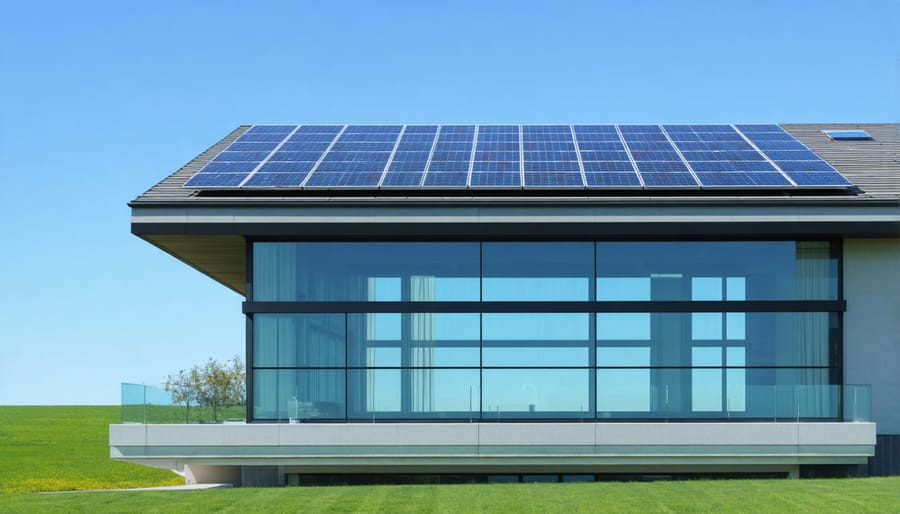
Bifacial Solar Panels
Imagine solar panels that work twice as hard by capturing sunlight from both sides. That’s exactly what bifacial solar panels do, representing a significant leap forward in solar technology. These innovative panels capture direct sunlight on the front while simultaneously harvesting reflected light from the ground on their rear surface.
Unlike traditional panels, bifacial models can increase energy production by 5-30% depending on installation conditions. This boost in efficiency comes from their ability to capture albedo – the reflected sunlight from surfaces like white roofs, light-colored ground cover, or even snow. The technology is particularly effective when installed on highly reflective surfaces or mounted on raised racks that allow more light to reach the rear of the panel.
While the initial cost might be slightly higher than conventional panels, the increased energy production often leads to better long-term savings for homeowners. Many early adopters report faster payback periods due to the enhanced power generation. The technology is especially beneficial in snowy regions, where winter ground reflection can significantly boost energy production during shorter days.
As manufacturing costs continue to decrease and efficiency improves, bifacial panels are becoming an increasingly attractive option for homeowners looking to maximize their solar investment. Their durability and dual-sided design make them particularly well-suited for ground-mounted installations and elevated rooftop systems.
Solar Tiles and Shingles
Solar tiles and shingles represent one of the most revolutionary solar trends in residential energy generation, seamlessly blending traditional roofing aesthetics with advanced solar technology. Unlike conventional solar panels, these integrated solutions replace standard roofing materials entirely, creating a sleek, uniform appearance that maintains your home’s architectural integrity while generating clean energy.
These innovative products feature photovoltaic cells embedded directly into roofing materials, eliminating the need for separate panel installation. Modern solar tiles come in various styles and colors, matching traditional slate, terracotta, or asphalt shingles, making them virtually indistinguishable from conventional roofing materials to the casual observer.
The benefits extend beyond aesthetics. Solar tiles are typically more durable than traditional roofing materials, offering excellent weather protection while generating electricity. They’re designed to withstand harsh conditions, including heavy rain, hail, and high winds, often coming with warranties comparable to or better than standard roofing materials.
While the initial investment may be higher than traditional solar panels, homeowners benefit from combined roofing and solar functionality, potentially reducing overall installation costs when factoring in roof replacement needs. As manufacturing scales up and technology improves, prices continue to decrease, making this elegant solution increasingly accessible to homeowners looking to embrace sustainable energy without compromising their home’s appearance.
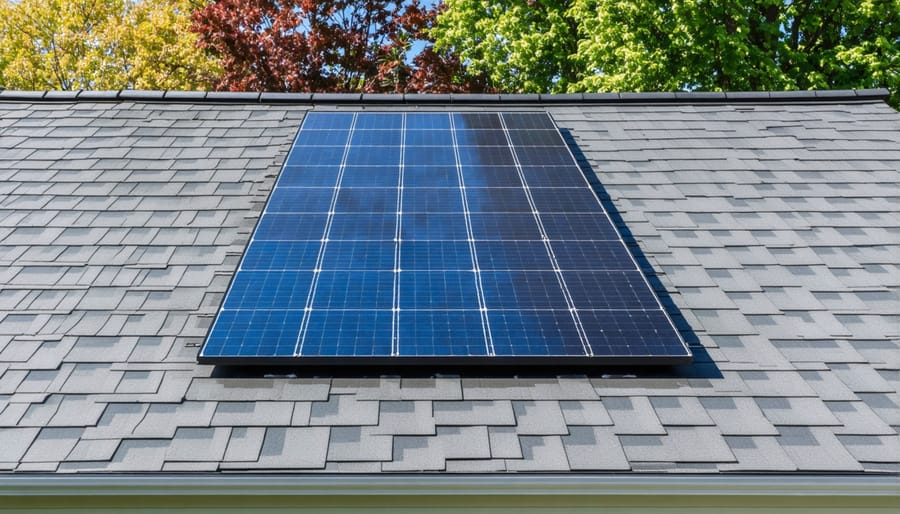
Multi-Junction Solar Cells
Multi-junction solar cells represent a remarkable leap forward in solar technology, offering significantly higher efficiency than traditional panels by capturing more of the sun’s energy spectrum. These innovative panels use multiple layers of different materials, each designed to absorb specific wavelengths of sunlight, working together like a team of specialists rather than a single generalist.
Think of these cells as a layer cake of solar power: the top layer captures high-energy light while allowing lower-energy light to pass through to deeper layers, where it’s absorbed by materials specifically designed for those wavelengths. This clever design allows these panels to convert up to 47% of sunlight into electricity, compared to the typical 15-20% efficiency of standard panels.
While currently more expensive than traditional solar panels, multi-junction cells are becoming increasingly accessible for residential use. They’re particularly valuable in situations where space is limited but energy needs are high, as they can generate more power from a smaller area. This technology has already proven its worth in space applications, powering satellites and Mars rovers, and is now making its way to Earth-based applications.
As manufacturing processes improve and costs decrease, multi-junction solar cells are poised to revolutionize home solar installations, offering homeowners the possibility of generating more clean energy from less roof space.
Floating Solar Panels
Floating solar panels are revolutionizing how we utilize water spaces for clean energy production. These innovative systems consist of solar panels mounted on specially designed floating platforms that can be installed on ponds, lakes, or swimming pools. For homeowners with water features on their property, floating solar offers a smart solution to maximize space while generating renewable energy.
The benefits of floating solar extend beyond space efficiency. The water’s cooling effect helps maintain optimal panel temperature, increasing energy production by up to 10% compared to traditional roof installations. This cooling mechanism also extends the lifespan of the panels, providing better long-term value for homeowners.
Installation is surprisingly straightforward, with panels anchored securely to prevent movement during weather events. The systems are designed to withstand various weather conditions while protecting the water body underneath. An added bonus? The panels reduce water evaporation and algae growth by providing shade, making them particularly beneficial for irrigation ponds and reservoirs.
While currently more common in commercial applications, floating solar is gaining traction in residential settings, especially for properties with larger water features. As costs continue to decrease and technology improves, these systems represent an exciting option for homeowners looking to maximize their solar potential.
Solar Paint Technology
Solar paint represents one of the most exciting breakthroughs in renewable energy technology, offering the potential to transform ordinary surfaces into power-generating assets. This innovative technology combines photovoltaic materials with conventional paint, allowing walls, roofs, and other surfaces to harness solar energy simply by applying a coat of paint.
Unlike traditional solar panels, solar paint is significantly less expensive to produce and can be applied to virtually any surface, including curved or irregular areas that wouldn’t typically accommodate standard panels. The paint contains tiny particles of light-sensitive materials that capture sunlight and convert it into electricity, much like their conventional solar panel counterparts.
Current prototypes have shown promising results, with some versions achieving efficiency rates of up to 8%. While this is lower than traditional solar panels, the ability to cover much larger areas at a fraction of the cost makes solar paint an attractive option for future energy solutions.
For homeowners, this technology could mean turning their entire house into a power-generating structure, potentially eliminating energy bills altogether. As research continues and efficiency improves, solar paint may soon become as common as regular house paint, revolutionizing how we think about residential energy generation.
Anti-Soiling Coatings
Anti-soiling coatings represent a game-changing solution for one of solar panels’ most persistent challenges: dirt and dust accumulation. These innovative nanotech coatings create an ultra-smooth surface that prevents particles from sticking to your panels, helping them maintain peak performance without frequent cleaning.
Think of it as giving your panels a permanent protective shield. When rain falls, it creates a self-cleaning effect by forming large droplets that efficiently sweep away accumulated dirt. This technology is inspired by nature, mimicking the water-repelling properties of lotus leaves.
The benefits are impressive: panels with anti-soiling coatings can maintain up to 98% of their original efficiency between cleanings, compared to untreated panels that might lose 15-30% efficiency due to soiling. For homeowners, this means more consistent energy production and fewer maintenance hassles.
These coatings are particularly valuable in dusty regions or areas with limited rainfall. While the technology adds a small premium to initial panel costs, the investment typically pays for itself through improved energy generation and reduced cleaning expenses. As manufacturing scales up, prices are expected to decrease, making this technology increasingly accessible to homeowners.
Smart Solar Tracking Systems
Smart solar tracking systems represent a significant leap forward in solar energy efficiency, combining artificial intelligence with precision engineering to maximize energy production. These innovative systems use advanced algorithms to continuously adjust solar panels throughout the day, ensuring they maintain the optimal angle relative to the sun’s position.
Unlike traditional fixed solar panels, smart tracking systems can increase energy production by up to 45% by following the sun’s path across the sky. The AI component analyzes weather patterns, historical performance data, and real-time conditions to make intelligent decisions about panel positioning, even anticipating cloud cover and adjusting accordingly.
What makes these systems particularly appealing for homeowners is their self-learning capability. Over time, they become more efficient at predicting optimal angles and movements, leading to increased energy production and lower electricity bills. The systems also include self-diagnostic features that can detect when panels need cleaning or maintenance, helping to maintain peak performance.
Recent advancements have made these tracking systems more affordable and reliable than ever before. With minimal moving parts and robust weather protection, modern smart trackers require little maintenance while significantly boosting your solar investment’s return. For homes with limited roof space, these systems offer an excellent solution to maximize energy generation from a smaller solar array.
Hybrid Solar-Thermal Panels
Hybrid solar-thermal panels represent a significant leap forward in solar technology, offering a two-in-one solution for homeowners seeking maximum energy efficiency. These innovative panels simultaneously generate electricity and heat, making them substantially more efficient than traditional solar panels alone.
The panels work by capturing solar energy through photovoltaic cells while also collecting heat through a thermal absorption system. The heat captured can be used for water heating, space heating, or even cooling through absorption chillers. This dual functionality means homeowners can reduce their reliance on both electricity and gas utilities, potentially cutting energy bills by up to 40%.
What makes these panels particularly attractive is their space efficiency. Rather than installing separate systems for electricity and heating, a single hybrid system can handle both needs while taking up the same roof space as traditional solar panels. This is especially beneficial for homes with limited roof area.
The technology also addresses one of solar panels’ typical inefficiencies: heat buildup. By actively removing heat from the photovoltaic cells, the thermal component helps maintain optimal electrical generation efficiency, resulting in better overall performance throughout the year.
As we’ve explored these transformative solar solutions, it’s clear that residential solar power is entering an exciting new era. These technologies are making solar energy more efficient, affordable, and accessible for homeowners than ever before. From improved energy storage solutions to smarter monitoring systems, these innovations are addressing traditional barriers to solar adoption. The future of home solar is bright, promising greater energy independence, reduced utility bills, and a smaller carbon footprint. As these technologies continue to mature and become more widely available, homeowners can look forward to even more compelling reasons to make the switch to solar power. The combination of these advancements is creating a perfect moment for homeowners to embrace clean energy and take control of their energy future.

